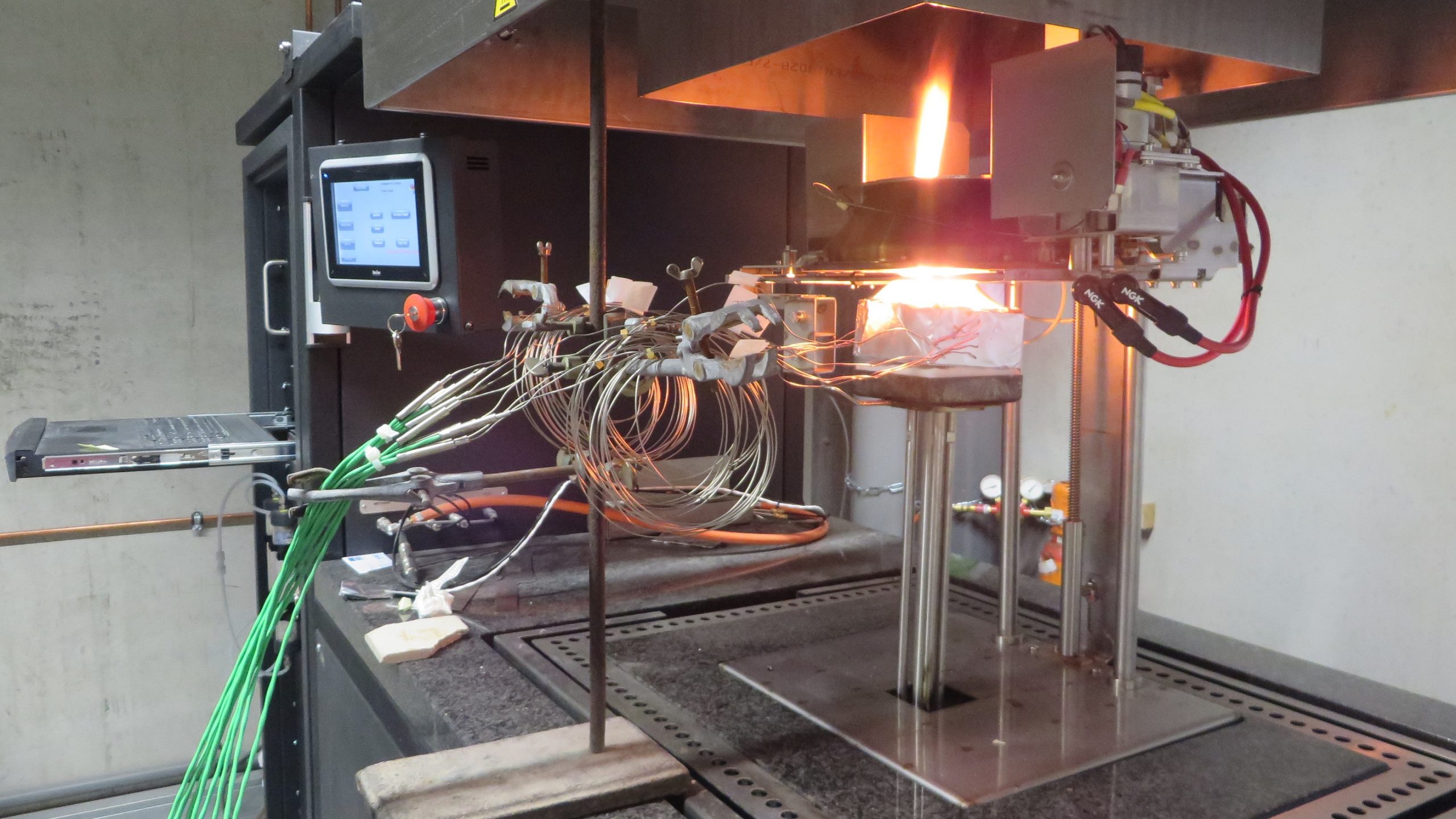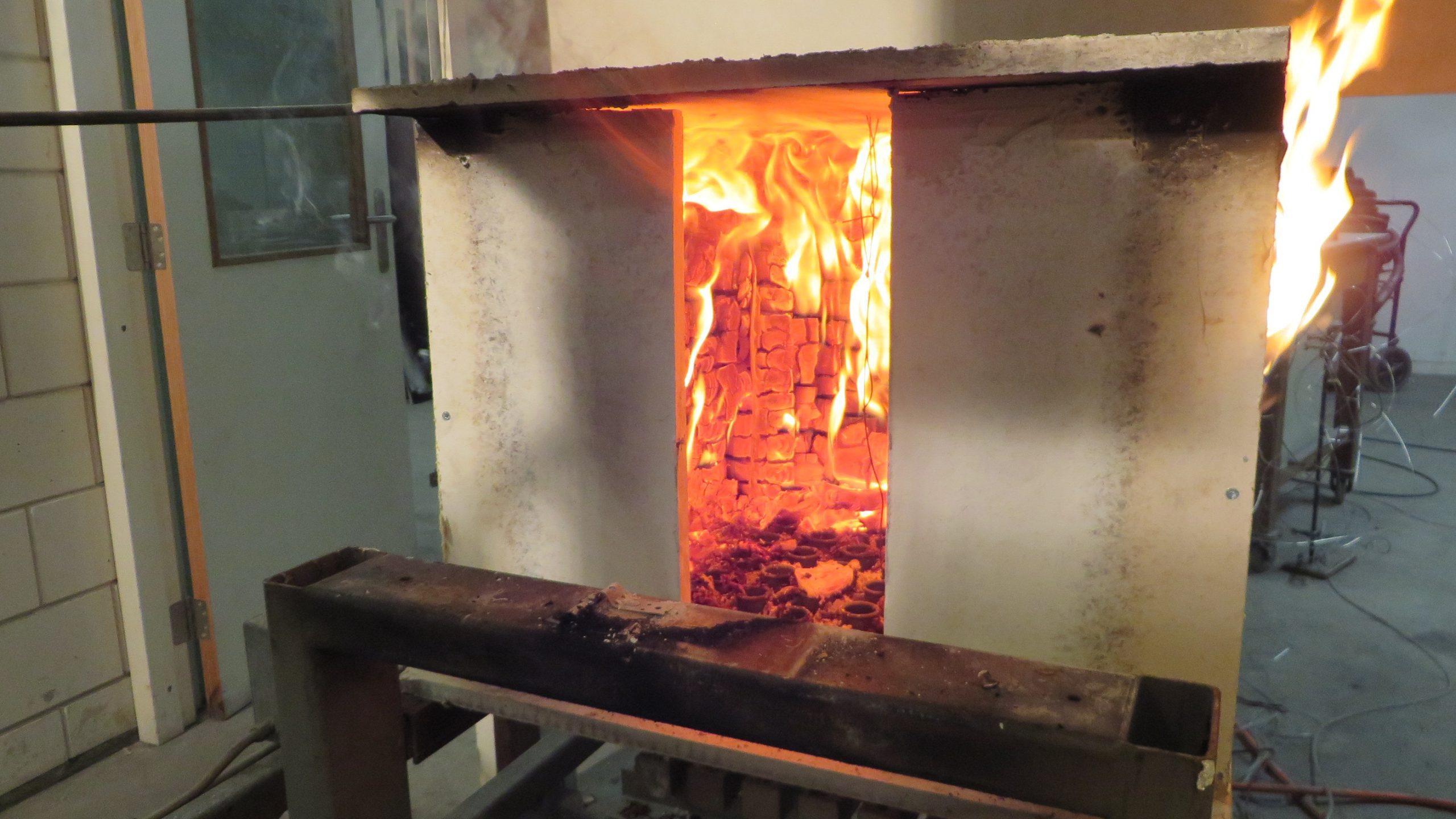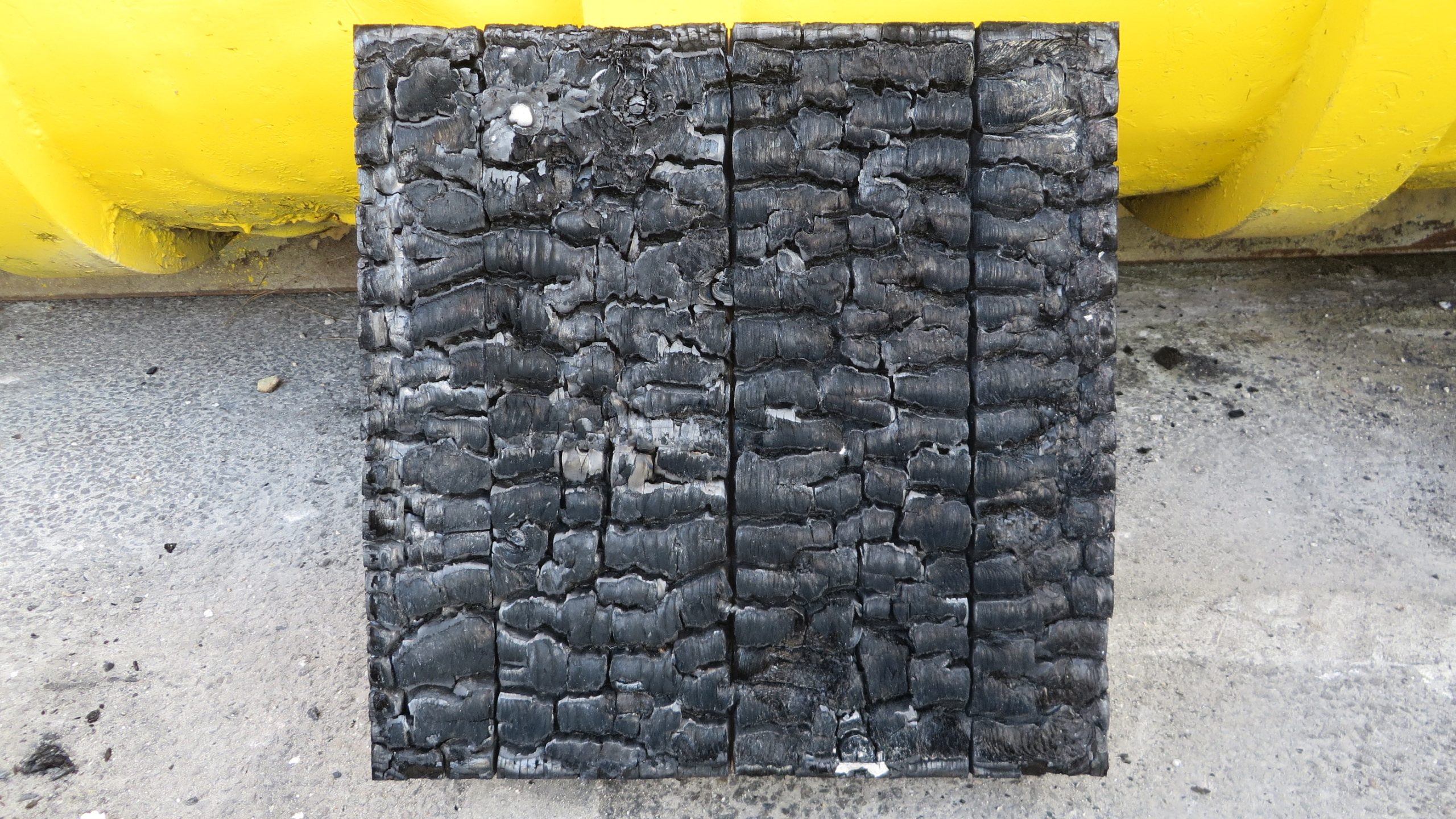Uncertainty about its performance under fire restricts the use of wooden panels for high buildings. Roy Crielaard has shown that some forms of cross-laminated timber remain unimpaired.
Wooden apartment buildings are popping up all over the world. The nine-story Graphite Apartments in London and the 14-story Treet building in Bergen, Norway are well known among wood-enthusiasts. Plans exist for even taller wooden towers in Oslo and Vancouver. Architect Michael Green (Canada) in his TED talk pleads for building skyscrapers made from wood instead of steel and concrete. Structurally it can be done, wood is a sustainable resource, and the building acts as a carbon-sink. So why don’t we build more and higher with wood?
First, we should make clear what we mean by ‘wood’ here. This is not the planks and beams that you may be used to, but massive thick plates called cross-laminated timber or CLT. Typically these solid slabs of wood are 10 – 20 cm thick, and built up from five to nine layers laid perpendicularly and glued together. When used for building, computer-guided saws and drills cut holes for doors, windows and piping. Channels for electrical wiring are cut into the panels. At the building site, a crane will hoist the panels in position. They are then bolted together with metal brackets.
What’s holding back the use of this supersize plywood for higher buildings can be explained in two words: Towering Inferno. Such is the fear that a fire in an apartment building made from CLT could result in uncontrollable raging flames and end in ashes.
But how combustible is CLT really? Does it go on burning after the first heat is gone or does it self-extinguish? Those important questions were the motivation for the master thesis research by Roy Crielaard MSc, who graduated from the Faculty of Civil Engineering and Geo Sciences with a 9.5 on his thesis.


Burning blocks
For his experiments, Crielaard distinguished two phases of the fire. In the first and most intense phase, material is exposed to gas flames that transfer 75 kilowatts per square meter. The experiment models the phase when the furniture in an apartment is ablaze and emits enormous amounts of heat. In the second phase, all combustible furniture has been consumed, and the heat radiation drops to 0 – 10 kW/m2. In response, the wood panels transform from a flaming to a smouldering combustion and eventually self-extinguish.
In the lab, Crielaard started with book-sized blocks of CLT that were equipped with temperature sensors, put under a gas flame first and a smaller heat source afterwards. These tests pointed out that CLT does go out spontaneously provided that the remaining radiation was less then 5-6 kW/m2 and the passing airflow less than 0.5 m/s.


Burning cubes
His next set-up included the radiation from burning walls and floor on each other. Since it’s difficult to calculate, Crielaard opted for the experimental approach and built a number of hollow wooden cubes (about 1 by 1 meter) with one open wall. He set them alight with gas flames from below. At the end of the experiments, Crielaard had found that spontaneous self-extinguishment did occur, but not always.
Whether or not the fire goes out spontaneously depends on the intactness of the wooden panels. If the fire had progressed so far into the timber that it reached the first glue layer. The charred top-layer fell off and the fire would blaze again, ramping up the temperature and the radiation. Sometimes, this delamination process would repeat at every subsequent layer until the flames broke through to the outside of the cube.


Fire proof
The good news is that a thicker top layer (40 instead of 20 mm) can prevent delamination and result in a calm self-extinguishment of the fire. Measuring the remaining strength was not part of the research, but Crielaard reckons that 90 percent of the structure can be designed to retain sufficient strength as long as delamination is avoided.
–> Roy Crielaard, Self-extinguishment of Cross-Laminated Timber, master thesis supervisor Prof. J.W.G. van de Kuilen (CEGS), 20 March 2015.



Comments are closed.